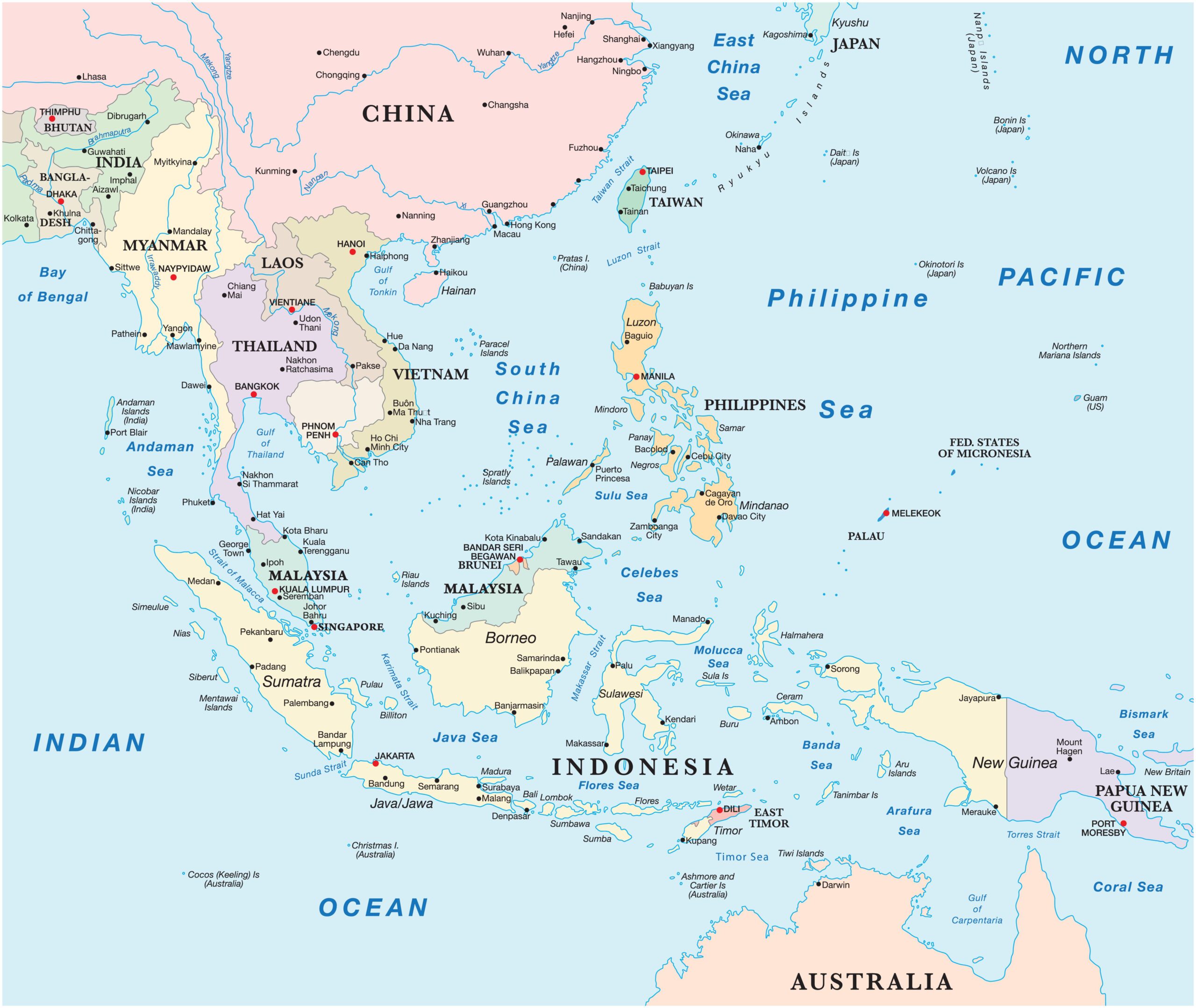 Map of the states of southeast Asia. [photo contributor: Rainer Lesniewski/ Alamy Stock Vector]
Map of the states of southeast Asia. [photo contributor: Rainer Lesniewski/ Alamy Stock Vector]
[This is an excerpt from an article in The Round Table: The Commonwealth Journal of International Affairs.]
China’s presence in the Indo-Pacific region has been considered as an ‘encirclement of India’ aimed at offsetting India’s expansion as a major power in the region. On the other hand, China’s growing population pressure and energy needs has, understandably, increased its presence in the Indo-Pacific region. China considers it to be a strategic imperative to protect the sea lanes of communication (SLOC) across the Indian Ocean from state and non-state actors. China’s naval modernisation programme, including the creation of permanent offshore naval bases and other infrastructure projects envisaged under the Belt and Road Initiative (BRI) has not only increased its footprint in the Indo-Pacific region but created threats for India as well. The simultaneous competition and conflict between India and China in the Indo-Pacific region has transformed the area into a potential theatre of conflict.
China has been repositioning its outreach towards the Indo-Pacific through constructing new projects under BRI to connect the region, which has led to an economic and political reshaping of the global supply chain. India needs to re-evaluate its position in the Indo-Pacific to offset instances of high-level conflicts. Moreover, the Chinese presence is considered a security concern for some actors, while China is concerned about the US, India, Japan, Australia, the UK (due to alliances like QUAD and AUKUS). India has to address emerging concerns, which should address the security dilemma of crucial chokepoints in the Indo-Pacific, and create a favourable geostrategic environment for collaboration amongst major powers and littoral countries. Moreover, India’s leadership should be able to deal with rising non-traditional security threats, viz. terrorism, piracy, cyber-attacks and environmental disasters.
Scramble for the Pacific: Small island states play the new Great Game
India resists growing pressure to condemn Russia’s Ukraine invasion
The Modi Government and India’s projection of its soft power
India needs to revamp its naval and economic infrastructure across the Indo-Pacific Region in order to create more possibilities for collaboration with littoral countries to cope with both traditional and non-traditional security threats. Furthermore, India’s pursuit of a naval modernisation programme, strengthening of co-operation in maritime security, and disaster relief programmes are all activities in the right direction. In the 21st century, with India’s transformative role in the humanitarian disaster relief assistance programmes to littoral states, piracy combat and combing operations, are expected to see it rise as a ‘net security provider’ in the Indo-Pacific region. India has the capability to achieve these ends. In many ways India’s active presence in the Indo-Pacific region, with the support of other major powers, provides the opportunity to reduce fragmentation amongst nation-states, rejuvenate globalisation and enable the institutionalisation of a New World Order. This New World Order will focus on the transition from conflict and competition to more peaceful political and economic relations, and as a ‘global and regional common’ for all the countries within the Indo-Pacific Region. Whether that will happen remains to be seen.
Ramnath Reghunadhan is an Assistant Professor of Politics, Christ University, Bangalore, India.



